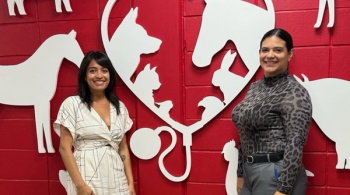
How much money do you need to build your veterinary hospital?
The veterinary practice of your dreams may require some serious cash. Here are some back-of-the-napkin calculations you can do to figure out if you can get what you need, courtesy of veterinary finance guru Gary Glassman.
Getty Images
Building a new veterinary hospital or undergoing a major renovation is a big life step-one that many veterinarians will only do once. And usually, the new facility will be larger, increase capacity and provide the ability to offer new and/or different services, says Gary Glassman, CPA, partner at Burzenski & Company in East Haven, Connecticut, and
What will your new hospital's new FIXED COSTS be?
> Mortgage
> Equipment loans
> Property tax
> Utilities
> Insurance
> Maintenance contracts
and you need to pay for them with …
INCREASED REVENUE.
But that takes time. So you could …
> Offer NEW services to EXISTING CLIENTS …
Boarding, grooming, behavior training, expanded treatment options like therapy laser and ultrasound, etc.
and/or …
> Add NEW CLIENTS, thanks to construction visibility and drive-by curiosity.
So, how many NEW SERVICES and NEW CLIENTS could you get? Let's do some math.
An average full-time practitioner sees 20-25 new clients per month …
and maintains 1,200 to 1,400 active clients.
Do the demographics!
A demographic study will tell you …
> the saturation level of existing practices
> number of local practicing veterinarians
> whether people are moving into or out of your area
> number of households
> number of households with pets.
Here's how the math works:
8,000 dog-and-cat-owning households in an eight-mile radius around your new hospital
divided by …
1,200 to 1,400 active clients (average full-time DVM client base)
equals …
8,000/1,200 = 6.6 veterinarians
If you have 10 full-time practitioners in your area, you won't grow. If you have four, there should be plenty of room for growth.
Of course, an increase in revenue almost always increases your costs.
A full-time practitioner generates, on average, 5,000 to 5,500 invoices per year.
Want to generate more?
You'll need to better leverage your existing staff to assist the doctors …
and then most likely hire another doctor and more support staff to meet the higher workload.
(And don't forget taxes, worker's compensation, insurance and other benefits.)
Can you price your way out of this?
Skip getting new clients and offering new services!
Just raise your prices!
Don't try this.
That is all.
Now let's put it all together in (and do some rounding, because who wants all those cents in our calculations, right?) …
Dr. Ellen's Average Animal Hospital
Average has two full-time doctors in a 2,500-square-foot hospital. The new facility is 5,000 square feet.
The project includes:
> $300,000 land purchase
> $200 cost/square foot construction cost.
That's $1.3 million.
Dr. Ellen sells the current facility for $450,000 …
pays off the existing mortgage of $375,000 …
and reinvests the remaining $75,000 in the new building.
She adds $55,000 of her own savings for a 10% down payment: $130,000.
She borrows $1,170,000 to complete the project at a 5.5% interest rate over 20 years.
The monthly payment is $8,048, with an additional $1,000 in property taxes/ month.
Her total yearly payment? $108,579.
The hospital's current gross revenue is $1,152,825, with 10,025 invoices a year at an average invoice cost of $115.
Based on the …
> Required new mortgage payment
> Property taxes
> Occupancy costs
Annual revenue to finance the new project? $1,809,656.
If her average invoice stays $115, the hospital needs 15,736 invoices per year, or a growth of roughly 57%.
If her average invoice increases to $122, the hospital needs just 14,833, or an increase of roughly 48%.
If a full-time practitioner generates 5,000 invoices/year, the hospital would need to add 1 more DVM to generate that revenue.
Newsletter
From exam room tips to practice management insights, get trusted veterinary news delivered straight to your inbox—subscribe to dvm360.






